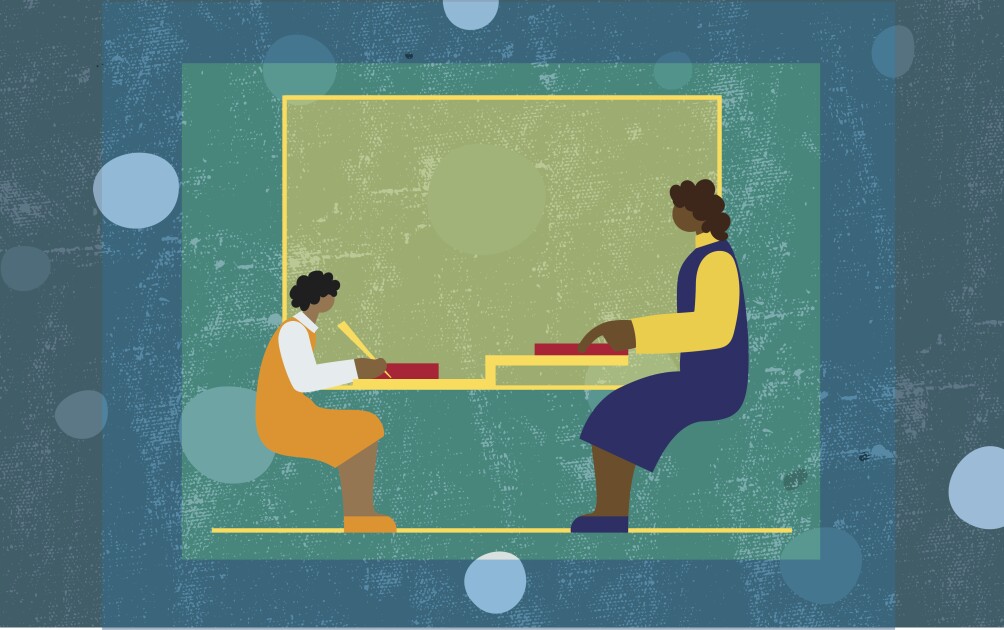Kids have always been curious about the human body and how it works. It follows that teachers—trusted adults trained in children’s development and understanding—should be able to impart knowledge on the subject as necessary.
But not everyone agrees.
Educators who take on subjects like human anatomy and sex education, considered by some parents to be controversial, sometimes risk their jobs, albeit rarely. The risk was highlighted earlier this month when a few vocal parents forced the resignation of a Tallahassee, Fla., charter school principal after the school’s art teacher showed 6th graders an image of Michelangelo’s nude statue of David in a Renaissance art class. One parent even went so far as to call it pornographic.
Sex- and health-education experts weighed in on the incident, drawing some larger lessons about the effects of children’s exposure—or non-exposure—to the human body.
‘Children don’t stay in bubbles’
Parents are the key shapers of children’s beliefs about religion and sex. But parents’ attempts to keep children innocent and shield them from anatomical information don’t only have the potential to endanger the jobs of their children’s educators. They also can make children dangerously vulnerable, explains one health expert. Plus, they’re unlikely to be effective, as online pornography and its particularly graphic and often violent images are increasingly accessible to people of all ages, including children.
“When responsible people stay silent, children don’t stay in bubbles. They go online for this information,” said Eva Goldfarb, a public health professor at Montclair State University and author of the 2021 report, “Three Decades of Research: The Case for Comprehensive Sex Education.”
“I would much rather my children learn about their bodies, and the need to protect themselves, from trusted adults rather than the internet or other kids,” she said.
Kids are accessing online pornography at record-high rates
As some adults worry about children’s exposure to human anatomy in a controlled school setting, recent research reveals alarming data about adolescents’ access to internet pornography. The average age when kids are first exposed to porn is 12, according to a 2023 national survey by Common Sense Media. More than half of teens surveyed reported viewing pornography by the age of 13, and 73 percent of teens ages 13 to 17 have watched pornography online.
Nearly a quarter of teenagers polled said they have viewed online pornography at school. A majority of teens surveyed who have viewed pornography reported being exposed to “aggressive and/or violent forms of pornography.”
The survey also found that 45 percent of the adolescents who viewed pornography agreed that they believe it gave them helpful information about sex.
Research suggests otherwise. Negative influences of pornography on adolescents and teens can include increased sexual aggression; mental health issues such as anxiety and depression; interpersonal relationship problems; and dangerous sexual behaviors.
How teaching sex education in school can protect children
“It’s so bizarre. We’re teaching children at young ages all parts of the body except their genitals,” said Goldfarb. She pointed out that these omissions are also risky.
“Young children who are able to know the names of their genitals and can name their body parts appropriately are at much lower risk for sexual assault, exploitation, and much more likely to report it if they do encounter it,” Goldfarb said. “By keeping children ignorant, you are making them much bigger targets for being exploited or abused.”
Despite protests like the recent incident in Tallahassee, Goldfarb said that the majority of parents widely support sex education and have for decades. Data gathered by the Sexuality Information and Education Council of the United States support her assertion. In 2018, for instance, 89 percent of U.S. adults polled said they believe it is important to have sex education in middle school.
“Ask parents what it’s like talking about sexual health, puberty, etcetera with their children, and they’ll say it’s one of toughest things in parenting,” Goldfarb said. “Most parents are thrilled to have child development experts to partner with them to teach sex education.”









